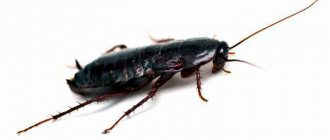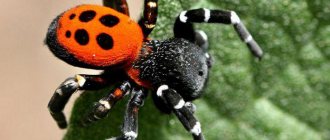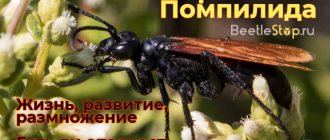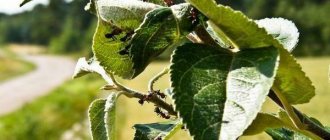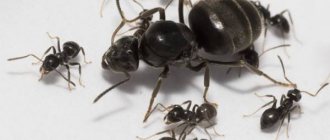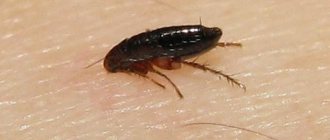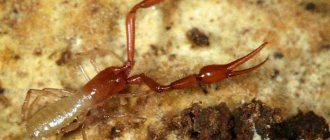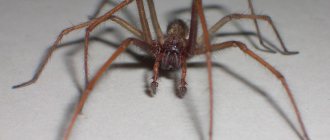Description
The karakurt spider (Latrodectus tredecimguttatus) belongs to the genus of black widows. The name is of Turkic origin and is used in the CIS and adjacent countries of Central Asia. The first part of the word “kara” does not cause any discrepancies and means “black”. The second part is usually translated as "worm". And here doubts arise. Depending on how the first letter of the word “kurt” is written in Latin: k or q, the meaning of the word changes. In addition to "worm", it can mean "beetle" or "wolf". The last two names are more suitable for the spider.
On a note!
In Europe, tracing paper from the Latin name is more popular: thirteen-point widow. This name is based on the appearance of the Asian karakurt.
Area
Karakurts are steppe spiders that prefer dry areas with warm winters. The territories where karakurts live occupy the entire dry belt of the Eurasian continent: from Spain to the steppe part of China.
In Russia, the northern limit of distribution of karakurts is indicated as 50° N. w. But in hot summers these spiders were also found further north. They even came across on the shores of Lake Onega.
Interesting!
With a high degree of probability, arthropods did not penetrate to the north on their own, but with the help of humans. They cannot take root there and die in winter.
In Central Asia, 3 types of karakurts live on the same territory:
- thirteen-spotted (Latrodectus tredecimguttatus);
- Dahl's karakurt (Latrodectus dahli);
- white (Latrodectus pallidus).
Types of karakurt spider
Thirteen-spotted is divided into 2 subspecies: Asian and European. The second name of the latter is European widow.
Appearance
Karakurts are medium-sized spiders. The body of the female is from 1 to 2 cm long. The male is only 4-7 mm in size. The female has a very large, almost spherical abdomen and long legs protruding from under it. In the photo of the karakurt spider you can see that there are 8 walking legs and the longest ones are the first and last pair. On the back surface of the abdomen there are arachnoid warts through which the silk thread is released into the external environment.
The cephalothorax appears very small compared to the body. But the spider has very powerful chelicerae, designed to bite through the chitinous shell of large locusts.
Internal structure
In this regard, the karakurt does not stand out among other types of spiders. In the cephalothorax are located:
- poison gland;
- esophagus;
- sucking stomach;
- gastric growths;
- anterior aorta.
The spider's heart is located in the abdomen, like all other organs:
- liver;
- ostia;
- posterior aorta;
- intestines;
- arachnoid gland;
- trachea;
- ovaries of a female.
The genital opening and spermatheca are located on the underside of the abdomen, closer to the cephalothorax.
Color
The European and Asian subspecies of Latrodectus tredecimguttatus differ from each other in the color of the spots on the abdomen. The Asian has 13 large red spots. Sometimes these spots are outlined by a white border. The European subspecies has faint white spots. Both subspecies coexist in the same territory and often interbreed.
In Central Asia, Latrodectus tredecimguttatus shares its habitat with two other species: Dahl's karakurt and white karakurt. The photo and description of these spiders coincide almost completely. The exception is color. Dahl's Karakurt is black without any markings. The white karakurt is the only light-colored representative of the black widow genus and the color of its abdomen is truly white. The cephalothorax is light brown.
Karakurt spider
On a note!
White karakurt is the least poisonous representative of the black widow genus.
White karakurt and its poison
The first hypothesis is supported by the presence on the planet of a species called white karakurt. This species belongs to the family of snails. It is the only species of its genus that is completely white with some shades of yellowish and even light brown in the cephalothorax region.
The white karakurt, similar to the black one in body shape and size, has the same spherical abdomen and thin long legs pointing forward. The white karakurt lacks the hourglass-shaped pattern characteristic of the black widow. A distinctive feature is four pits-indentations on the surface of the abdomen.
What are tarantula spiders?
We recommend reading: Aspergillosis in dogs: causes and methods of control
The white karakurt also has poison, but it is not dangerous to humans. There are very few cases of human bites by this species. However, special studies have proven the biochemical and toxic similarity of poisons in these two types of karakurt.
This species lives in North Africa, the Middle East, Iran, Russia, Kazakhstan, Turkmenistan, and Azerbaijan. The biotope of this spider is the same as that of its black counterpart.
Black widow bite (video)
Lifestyle
Karakurts can hunt both at night and during the day. They do not weave their web in a regular shape, like orb-weaving spiders, but in a disorderly heap of hunting threads. The web is also oriented not like other web sites - vertically, but in a horizontal plane. The main prey of spiders are locusts and grasshoppers. These invertebrates usually move on the ground. A web located horizontally near the habitat of arthropods is better suited for catching such game. The karakurt itself can wait for the victim, located in a shelter above the web. For housing, the karakurt chooses rodent burrows or openings in ventilation systems.
On a note!
Karakurts are prolific. The female can lay 1000-1300 eggs per year. Once every 10-20 years, an outbreak of arthropod populations occurs.
The lifespan of karakurts is less than a year. The young hatched from eggs in April become capable of reproduction in June. At this time, spiders begin to migrate, looking for secluded places protected from the heat. In shelters they weave temporary mating nets.
After fertilization, the female eats the male and goes in search of a suitable place where she can lay eggs. Having found a suitable shelter, the spider hangs 2-4 cocoons with eggs in it. In April, the hatched young fly away on cobwebs to new habitats.
Social structure and reproduction
Photo: Big yellow spider
These spiders live exclusively alone and try to settle away from each other. If they find themselves nearby, they usually disperse, and sometimes a conflict may arise between them - if one of the spiders is larger (usually this happens when a female and a male meet), then he simply tries to catch and eat the smaller one.
The mating season occurs in the spring - yellow spiders become active when the sun begins to warm up more strongly, that is, in March-April in the subtropics, by the beginning of May in the temperate climate zone. Then the males begin to look for females.
They do this very carefully - the female is much larger and can simply eat the male even before mating. Therefore, if he notices any sign of aggression, he immediately runs away
But if the female calmly lets him in, it means she is ready to mate - in this case, the male inserts the pedipalps into her genital opening.
After mating is completed, he should also run away as quickly as possible, since he risks being eaten again - he has fulfilled his function and again turns into nothing more than prey for the female. She spins a cocoon to lay eggs in and attaches it to leaves or flowers using a web - this is the only way yellow spiders use it.
Laying occurs in June-July, after which another 3-4 weeks pass before the spiderlings appear. All this time, the spider remains nearby and protects the eggs from any attacks. Small spiders molt for the first time while they are still in the egg, and after emergence they undergo another one or two molts.
When it starts to get colder, they burrow into the leaf litter and hibernate until the following spring. But even then they will wake up as not yet adult spiders - the yellow spider reaches sexual maturity only after the second wintering.
False karakurt
In the same area, that is, throughout Eurasia, spiders live that are similar in appearance and size to karakurt. These are web spiders from the same family Theridiidae as karakurts. But they belong to the genus Steatodes. Since steatodes look almost like karakurts, they received the unofficial name “false widows.”
On a note!
The large steatoda (Steatoda grossa) has pale light spots on its abdomen, similar to the color of the European subspecies of karakurt.
The color of the abdomen in steatodes can be:
- with beige or white spots;
- with a thin red line extending along the abdomen;
- with a yellow stripe down the back;
- with small red spots.
False karakurt
Because of the latter, the steatodu is mistaken for a poisonous karakurt spider. But the steatoda is not so poisonous, and its bite does not have serious consequences. According to the initial signs: increasing pain, sometimes nausea and headache - the effect of the poison of steatoda and karakurt is similar. This also makes it difficult to distinguish one spider from another. But the body can recover from the poison of steatoda on its own in a few days.
Migration of poisonous karakurt (video)
It is believed that the black widow karakurt is a spider that lives only in deserts in the south. To some extent this is true. The likelihood of encountering this small but very poisonous spider is high in arid regions where there are no harsh winters and wet forests.
Karakurts are the most poisonous spiders in Kazakhstan, Turkmenistan, Tajikistan, Crimea, the Azov region, the Astrakhan region, and the Black Sea region. However, there is a risk of meeting a black widow somewhere in a meadow and near Moscow, on the Kama, near Lake Onega. This does not mean that this steppe spider lives in the forested Moscow region. It’s just that sometimes in hot years it can migrate to areas unusual for it.
The natural habitat of this species is semi-deserts, steppes, and forest-steppes . The karakurt weaves its shapeless web in the form of a hammock above the ground among blades of grass in ditches, on the slopes of ravines, in wormwood bushes, in cracks in the ground, in potholes and rodent burrows.
The spiders' usual food - insects - gets into the web. In July or August, the female karakurt attaches cocoons with clutches of eggs to her hammock. After 5-7 days, small transparent spiderlings emerge from the eggs. However, they do not emerge from the cocoon, “ripening” there until spring.
Despite the poison of the karakurt, this spider also has its enemies who are not averse to eating it - these are hedgehogs, wasps, some predatory beetles, badgers, etc. The fact is that the venom of a black widow, just like any other spider or snake, is dangerous only if it is introduced into the blood. Under the influence of gastric juice, it is destroyed without causing harm to the animal. So the art of eating a poisonous spider is to kill it before it begins to inject venom into the bloodstream.
Darius - the largest rabbit in the world and his relatives
We recommend reading: Polodoxin for pigs and poultry - instructions for use
Bite symptoms and first aid
The male karakurt is not dangerous to humans, as it is not able to bite through the skin. The female bites to a depth of 0.5 mm. The venom of these arthropods rarely leads to death, especially after the appearance of anti-karakurt serum, but the victim is guaranteed a lot of unpleasant sensations.
Females are not aggressive and attack only when threatened. But they may consider accidental brushing against a web to be a threat.
On a note!
Camels and horses are especially sensitive to poison.
But sheep can be used as an anti-karakurt weapon. They are insensitive to poison and trample spider nests in pastures.
Symptoms
The effect of the poison is immediate. A burning pain appears at the site of the karakurt bite, which spreads throughout the body within 10-15 minutes. Very severe pain appears in the chest, abdomen and lower back. A spasm of the abdominal muscles occurs. There are signs of general poisoning of the body:
- rapid pulse;
- heartbeat;
- dyspnea;
- vomit;
- tremor of the limbs;
- pallor or, conversely, the face turns red due to the influx of blood;
- heaviness in the chest area;
- dilated pupils;
- uncontrolled movement of the eyeball;
- priapism is possible in men;
- bronchial spasm.
On a note!
Later, you may notice a delay in urination and defecation. In the later stages, nervous excitement gives way to severe depression. Delirium and clouding of consciousness may occur. Fatal outcome is rare, but it cannot be ruled out.
Treatment and first aid
Treatment is carried out in a hospital setting. In the absence of antikarakurt serum, novocaine, magnesia and calcium chloride are administered intravenously. The victim still needs to be taken to the hospital, and for this you need to know what to do if you are bitten by a karakurt somewhere far from civilization.
First aid can only be provided within the first 2 minutes. The affected area is cauterized with a burning match. Under the influence of high temperature, the poison is destroyed. But even in this case, the victim must be taken to the hospital as quickly as possible.
The most dangerous spider in Russia
Karakurt
And in first place, with a large gap from all other contenders, is karakurt. If you translate this word from the Turkic language, you get a black insect. But this is not a worm at all, and in addition to the black color, it has red spots
The coloring of karakurts is remarkable; it immediately attracts attention and should cause concern. Red spots on the black back are visible from a distance
In fact, only the females of this species are poisonous, and the males do not pose a serious danger. And the females are also easy to distinguish - they have a red pattern on their abdomen that resembles an hourglass. Read more about this pack in our article: Karakurt spider.
This spider differs from all others in that it has a truly dangerous poison that can bring not only discomfort, but also death. While less poisonous spiders only bring pain and discomfort with their bite, this one is capable of killing a horse with its venom. After a bite, severe pain is felt throughout the body, and in order to save the person, it is necessary to urgently take him to the hospital and provide a special serum. Only after this will the patient have a chance of survival, although the unpleasant consequences and symptoms will continue for some time. The habitat of the karakurt is the south, these spiders live in the Crimea and nearby regions, they live mainly in the steppes.
There are other spiders in Russia, encountering which does not bode well, but they all only cause pain and discomfort. However, an allergic reaction can also occur to bites, and therefore, if this happens, it is necessary to carefully treat the bitten person and immediately take him to the hospital if the condition begins to worsen.
Anaphylactic shock when exposed to insects and spiders is not uncommon. However, most of the spiders to be wary of are southern creatures, and for the time being this was pleasing. But in recent years, the situation has changed dramatically, and scientists have recorded that the range of spiders, including dangerous ones, is extending further and further to the north. This is associated with climate warming.
Despite the fact that the same phalanx is sometimes encountered in the Moscow region, there is no need to panic. Many scientists believe that this is a temporary phenomenon, and in the future the situation will stabilize, worsening only in particularly hot seasons.
But be that as it may, it’s worth knowing dangerous spiders by sight in order to protect yourself and to protect your loved ones, especially children
After all, a large spider always attracts attention, and increased interest in its person may well provoke an attack. Even though most spiders are nocturnal, you should take the risk of encountering them seriously.

